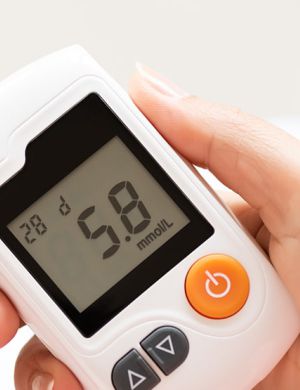
Control of Nitrosamine Impurities in Human Drugs
Good Manufacturing Practice (CGMP) to address the control of nitrosamine impurities in human drugs. The guidance is being issued without prior public comment due to the need to provide manufacturers with timely information on risk assessment, testing, and mitigation strategies for nitrosamine impurities in active pharmaceutical ingredients (APIs) and drug products. Although implemented immediately, the guidance remains open for public comment in accordance with FDA’s good guidance practices.
The guidance outlines the steps API and drug product manufacturers should take to detect, mitigate, and prevent unacceptable levels of nitrosamine impurities, and explains the conditions that can lead to their formation.
General Root Causes of Nitrosamine Impurities in APIs
- Conditions that facilitate nitrosamine formation
- Presence of secondary, tertiary, or quaternary amines capable of forming nitrosamines
- Contamination from vendor-supplied raw materials
- Recovered solvents, catalysts, or reagents used in manufacturing
- Quenching processes that may introduce nitrosamines
- Insufficient process optimization and control
Recommendations
Acceptable Intake Limits
FDA recommends the following acceptable intake (AI) limits for nitrosamine impurities:
| Nitrosamine | AI Limit (ng/day) |
| NDMA | 96 |
| NDEA | 26.5 |
| NMBA | 96 |
| NMPA | 26.5 |
| NIPEA | 26.5 |
| NDIPA | 26.5 |
These limits apply when only a single nitrosamine impurity is present. If multiple listed nitrosamines are detected and the total exceeds 26.5 ng/day—the AI for the most potent nitrosamines—manufacturers should contact FDA for further evaluation.
For products with a maximum daily dose (MDD) below 880 mg/day, a total nitrosamine limit of 0.03 ppm (equivalent to 26.5 ng/day) is considered acceptable. For products with an MDD higher than 880 mg/day, limits should be adjusted to ensure they do not exceed 26.5 ng/day.
Steps Manufacturers Should Take
- Conduct a timely risk assessment of APIs, marketed products, and products under approved or pending applications. While risk assessments are not required to be submitted to FDA, manufacturers must retain documentation.
- Perform confirmatory testing when any risk of nitrosamine presence is identified. Analytical methods must provide adequate specificity, separation, and sensitivity due to the unique properties of nitrosamines (e.g., volatility, low molecular weight, toxicity).
- Report all process changes intended to reduce or prevent nitrosamine impurities. This includes DMF amendments (21 CFR 314.420(c)), changes to approved applications (21 CFR 314.70, 314.97), and changes to pending applications (21 CFR 314.60, 314.96).
Recommendations for API Manufacturers
- Optimize the API manufacturing process during route of synthesis (ROS) development to minimize nitrosamine formation. Reference ICH M7(R1), Q7, and Q11 for guidance.
- Remove or modify quenching steps that could result in nitrosamine formation (e.g., steps using nitrous acid).
- Audit and monitor supply chains to identify raw materials, starting materials, and intermediates that may pose risks.
- Prevent cross-contamination from recovered materials (solvents, reagents, catalysts) by ensuring they are used only in the same or earlier manufacturing steps with proper purification.
- Recognize that potable water used in manufacturing may contain nitrite or nitrosamine contamination.
- Reprocess or rework API batches found to contain nitrosamines under quality oversight, as permitted by ICH Q7. All reprocessing or reworking operations must be appropriately controlled.
Recommendations for Drug Product Manufacturers
Drug product manufacturers should conduct comprehensive risk assessments for potential nitrosamine formation. Collaboration with API manufacturers is essential to understand ROS details and other process conditions that may introduce nitrosamines. The assessment must also consider degradation pathways during product manufacture or storage.
If no risk is identified, no further action is required. If a risk exists, manufacturers must conduct confirmatory testing using sensitive, validated methods. When nitrosamines are detected, root causes must be investigated, and manufacturing processes must be adjusted to reduce or eliminate impurities.
Reporting Changes to FDA
Manufacturers must report any changes implemented to mitigate or prevent nitrosamine impurities under 21 CFR 314.60, 314.70, 314.96, and 314.97.
If an API DMF holder modifies the ROS or performs confirmatory testing that leads to changes, amendments must be submitted to the DMF. Drug product manufacturers referencing the DMF must be notified.
If API manufacturing is conducted by the applicant without a DMF, all changes must be reported directly in the application per FDA regulations. Any reprocessing or reworking performed due to nitrosamine detection must also be reported.
Don’t miss out! Click here to stay in touch.
Categories
- Biopharma (58)
- Consumer Health (21)
- Cosmetics (11)
- Diagnostics (5)
- Digital Health (8)
- Food (2)
- Medical Device (112)
- OTC (5)
- Regulatory Intelligence (13)
- Standards (41)
Recent Blogs
Get the latest updates from Vistaar

CONNECT WITH US

Let's talk about how Vistaar can help you



